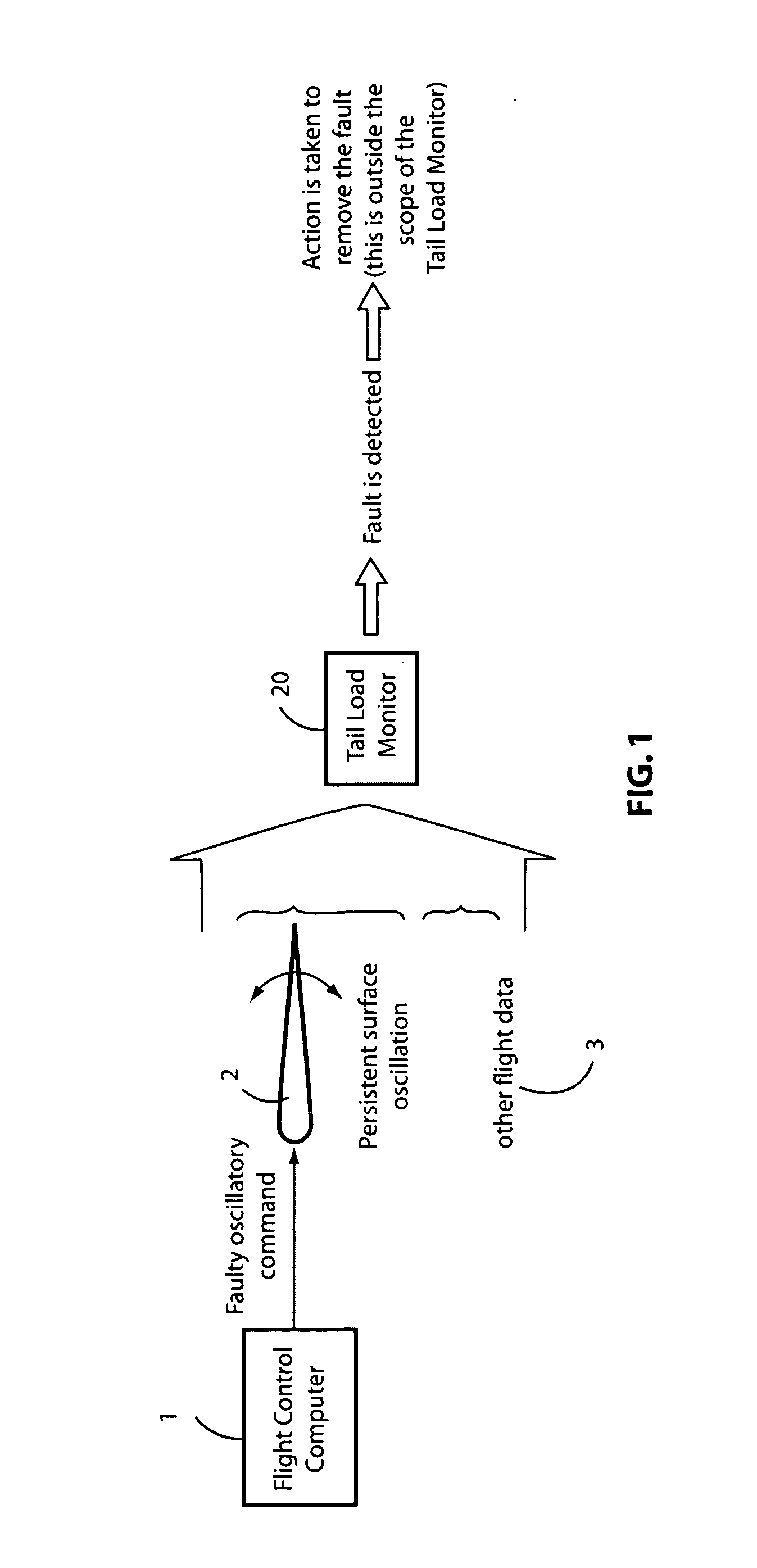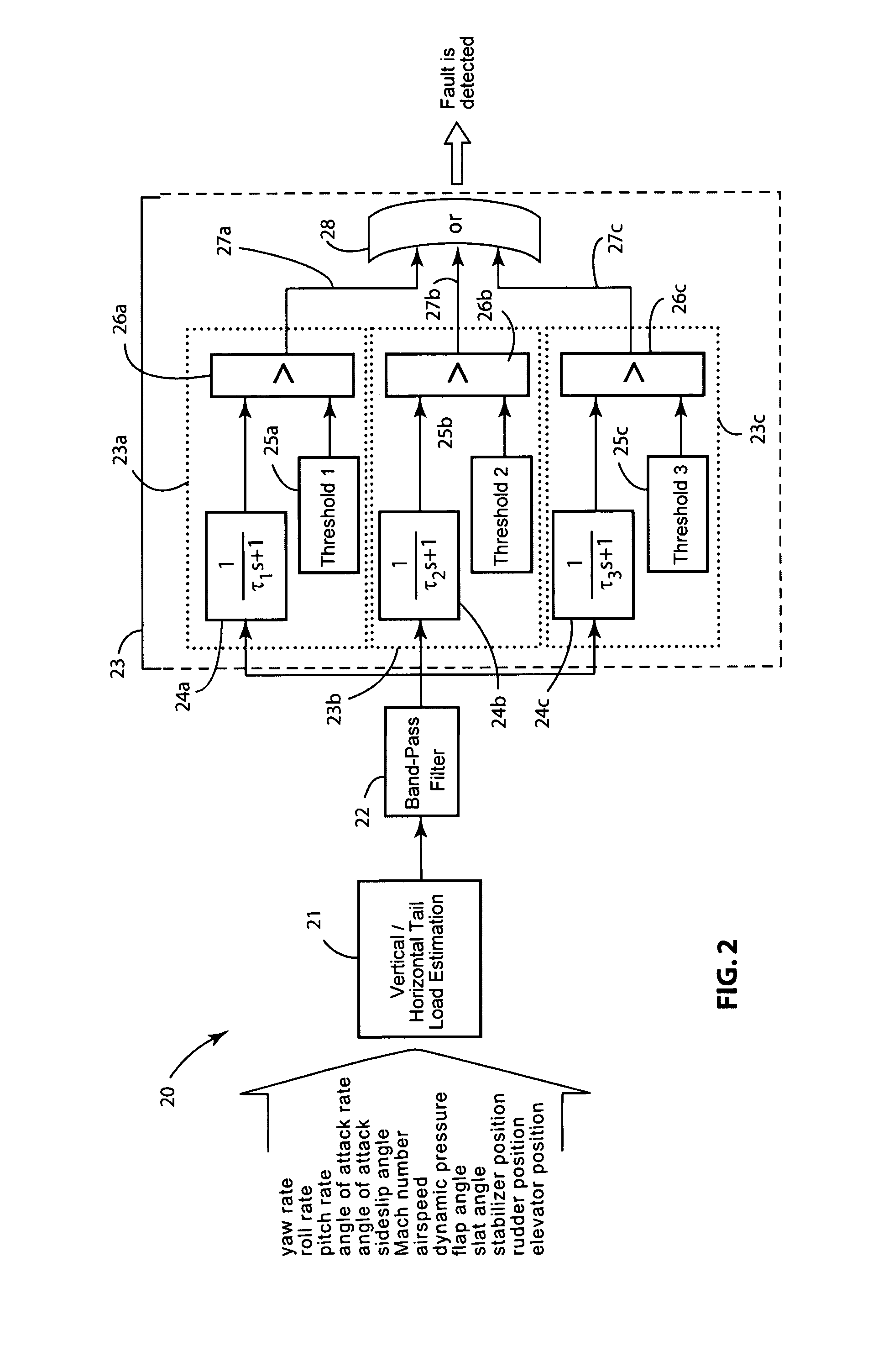Low-frequency flight control system oscillatory faults prevention via horizontal and vertical tail load monitors
- Summary
- Abstract
- Description
- Claims
- Application Information
AI Technical Summary
Benefits of technology
Problems solved by technology
Method used
Image
Examples
Embodiment Construction
[0016]There are two kinds of tail load monitoring activities: one related to the vertical tail and one related to the horizontal tail. Therefore, the exemplary illustrative non-limiting Tail Load Monitoring System 20 as shown in FIG. 1 can be either a Vertical Tail Load Monitor or a Horizontal Tail Load Monitor. In other words, both Vertical and Horizontal Tail Load Monitors share the same basic exemplary illustrative non-limiting architecture, an implementation of which is illustrated in FIG. 2.
[0017]Their mitigation effects scope comprises, respectively, unwanted persistent rudder and elevator oscillations (that may result, for example, from simultaneous faults in multiple lanes of a digital processing unit such as the one depicted in FIG. 1), that exceed the designed oscillatory envelope for low frequencies.
[0018]The exemplary illustrative non-limiting Vertical and Horizontal Tail Load Monitors thus protect the aircraft from structural damage that can arise as a consequence of co...
PUM
 Login to View More
Login to View More Abstract
Description
Claims
Application Information
 Login to View More
Login to View More - R&D
- Intellectual Property
- Life Sciences
- Materials
- Tech Scout
- Unparalleled Data Quality
- Higher Quality Content
- 60% Fewer Hallucinations
Browse by: Latest US Patents, China's latest patents, Technical Efficacy Thesaurus, Application Domain, Technology Topic, Popular Technical Reports.
© 2025 PatSnap. All rights reserved.Legal|Privacy policy|Modern Slavery Act Transparency Statement|Sitemap|About US| Contact US: help@patsnap.com



